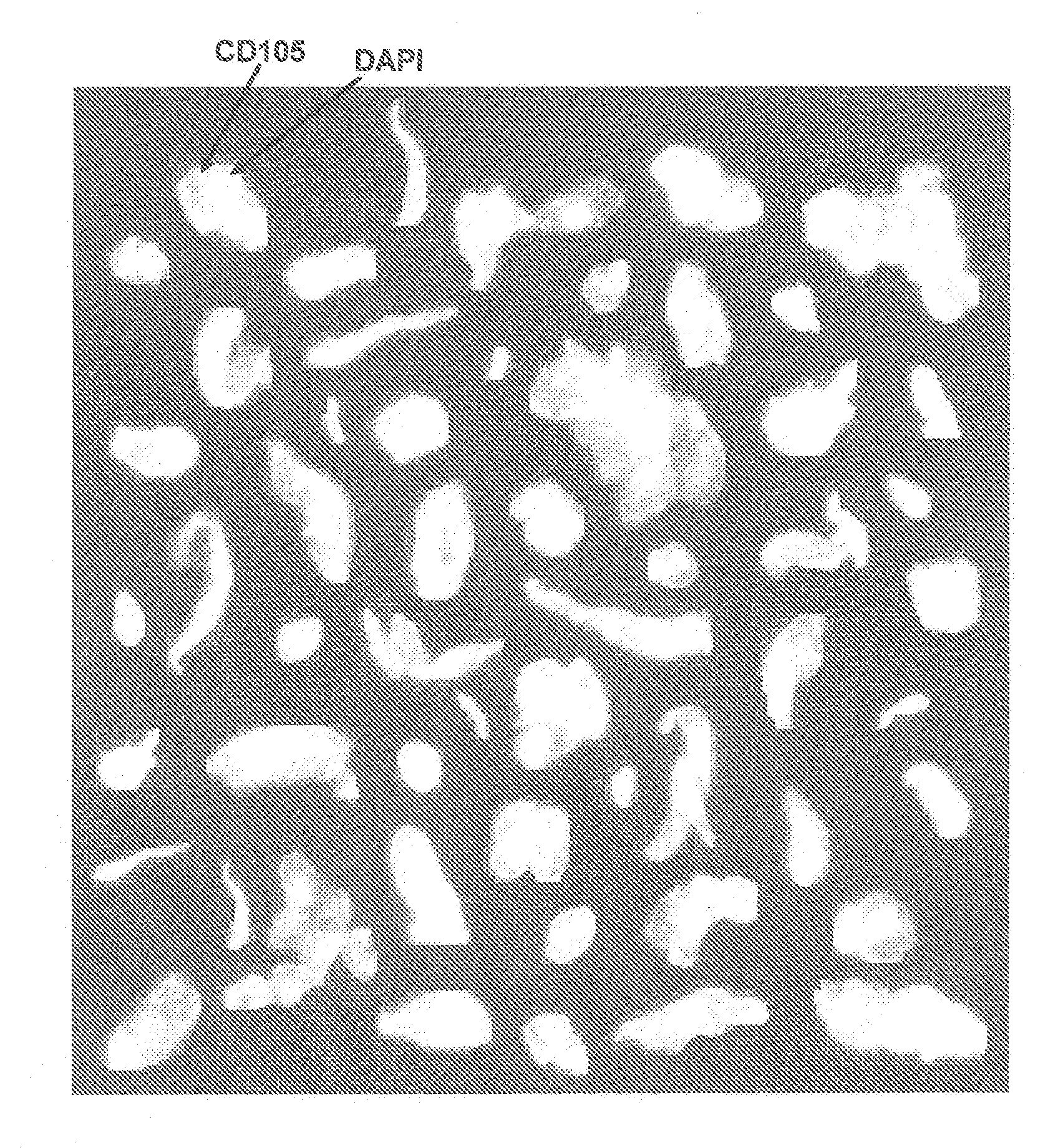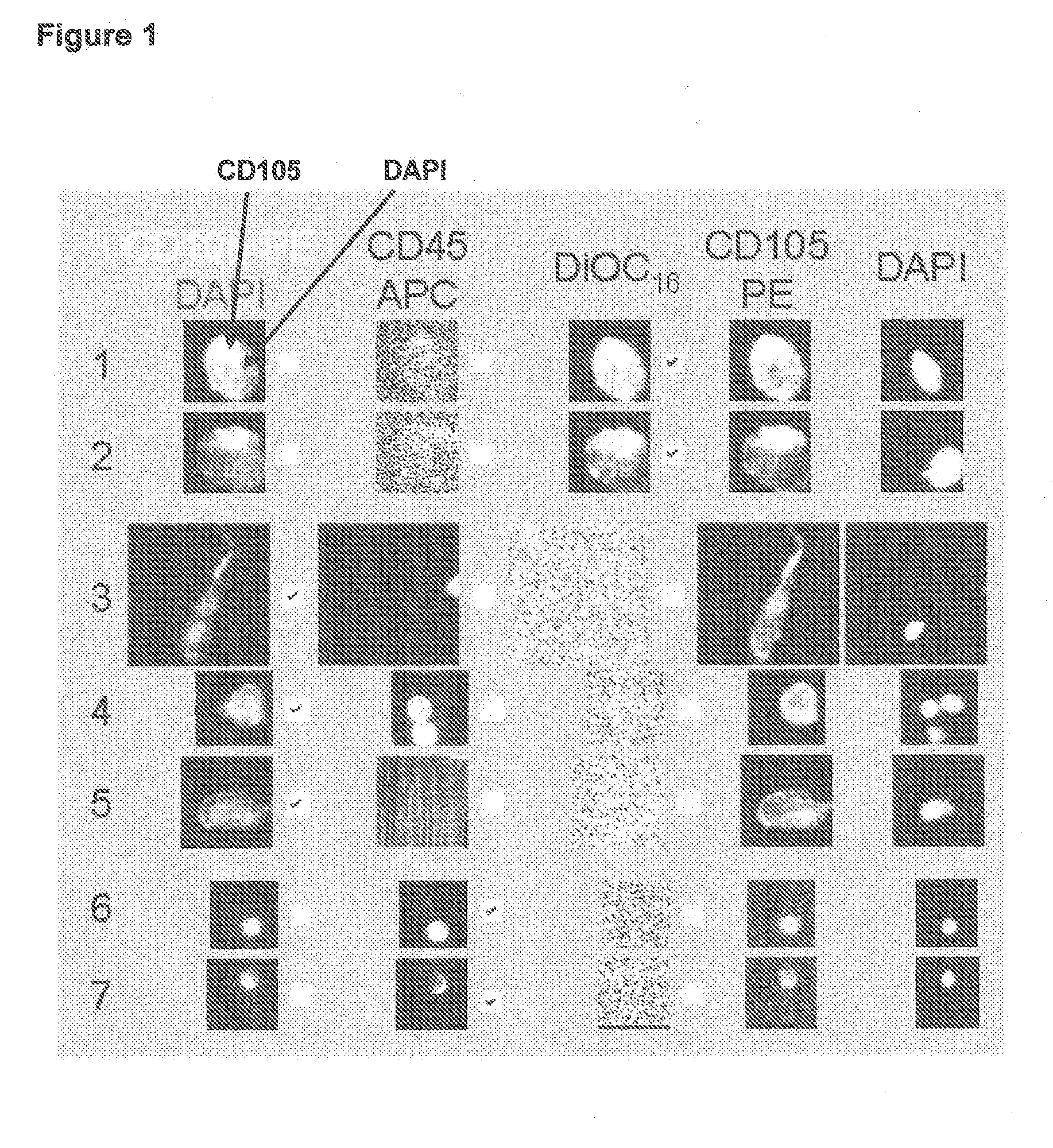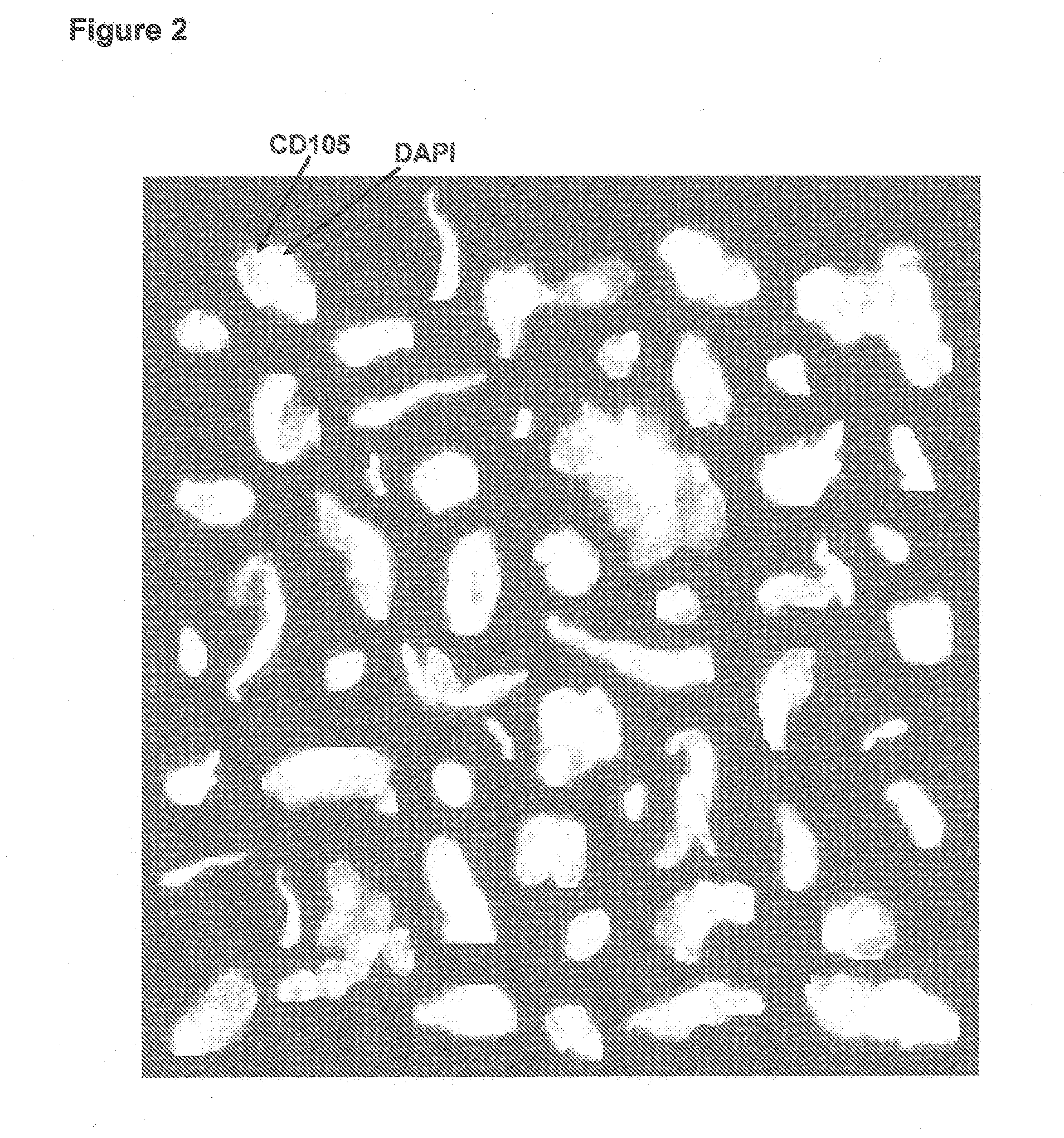Method of assessing metastatic carcinomas from circulating endothelial cells and disseminated tumor cells
a metastatic carcinoma and tumor cell technology, applied in the field of cancer prognosis and survival in metastatic cancer patients, can solve the problems of difficult detection and elimination, inability to treat all patients successfully, and inability to improve the survival rate of cancer patients over the past two decades
- Summary
- Abstract
- Description
- Claims
- Application Information
AI Technical Summary
Benefits of technology
Problems solved by technology
Method used
Image
Examples
example 1
Circulating Endothelial Cells (CEC) and Circulating Tumor Cells (CTC) in Patients with Metastatic Colorectal Cancer
[0039]Lack of validated surrogate endpoints is an impediment to developing new cancer therapy. We hypothesized that CTC and CEC could predict outcome in pts undergoing treatment for metastatic colorectal cancer. Eligible patients for this multicenter study had metastatic colorectal cancer, and were initiating 1st, 2nd, or 3rd-line systemic therapy. Blood was obtained at baseline and 3-4 weeks after treatment initiation for enumeration of CTC / CEC. CTC / 7.5 ml and CEC / 4 ml of blood were measured with the CellTracks® System. CTC were immunomagnetically enriched targeting CD326 (EpCAM), stained with DAPI, cytokeratin 8,18,19, and CD45. CEC expressing CD146 were immunomagnetically enriched and stained with DAPI, CD105, and counterstained with CD45. Cell morphology was confirmed in all cases.
[0040]In 139 controls CTC were virtually absent (0 CTC in 135 and 1 CTC in 4). For 131...
example 2
Circulating Endothelial Cells in Peripheral Blood of Healthy Subjects and Patients with Metastatic Carcinomas
[0042]In order to determine accuracy, precision, and linearity of endothelial cell enumeration in blood and compare CECs in healthy subjects and patients with metastatic carcinomas.
[0043]Blood was drawn in preservative tubes from controls and patients with metastatic carcinomas at multiple geographic locations. Samples were maintained at room temperature, shipped to a central laboratory, and processed within 72 hours of blood collection. All patients and healthy individuals were enrolled using approved protocols and provided informed consent. The healthy individuals used for comparison with the patients had no known illness or fever at the time of draw, no history of malignant disease, and were 35 years of age or older to provide a cohort age-matched with the cancer population.
[0044]The CellTracks® System (Immunicon, Huntingdon Valley, Pa.) used for endothelial cell enumerati...
example 3
Peri-Operative Assessment of Circulating Tumor Cells in Blood, Disseminated Tumor Cells in Bone Marrow, and Tissue Gene Signatures in Patients with Primary Breast Cancer
[0059]Approximately 30% of the 200,000 women diagnosed annually with breast cancer will recur. Without a validated assay to identify these patients, all become candidates for adjuvant therapy. Both Real-time RT-PCR analysis of primary tissue and detection of disseminated tumor cells (DTC) in bone marrow by immunohistochemistry (IHC) purportedly aid in identifying these patients. This study demonstrates that the automated immunomagnetic fluorescent detection systems used to detect ‘circulating’ tumor cells (CTC) in blood could also be used to quantify DTCs in marrow. Incidence of CTCs, DTCs and gene signatures in matched specimens were also compared.
[0060]30 ml blood and 3 ml bone marrow specimens were collected in a preservative peri-operatively from 33 consented primary breast cancer patients stage 0-III. 31 healthy...
PUM
| Property | Measurement | Unit |
|---|---|---|
| magnetic field | aaaaa | aaaaa |
| enzyme activity | aaaaa | aaaaa |
| gel electrophoresis | aaaaa | aaaaa |
Abstract
Description
Claims
Application Information
 Login to View More
Login to View More - R&D
- Intellectual Property
- Life Sciences
- Materials
- Tech Scout
- Unparalleled Data Quality
- Higher Quality Content
- 60% Fewer Hallucinations
Browse by: Latest US Patents, China's latest patents, Technical Efficacy Thesaurus, Application Domain, Technology Topic, Popular Technical Reports.
© 2025 PatSnap. All rights reserved.Legal|Privacy policy|Modern Slavery Act Transparency Statement|Sitemap|About US| Contact US: help@patsnap.com



